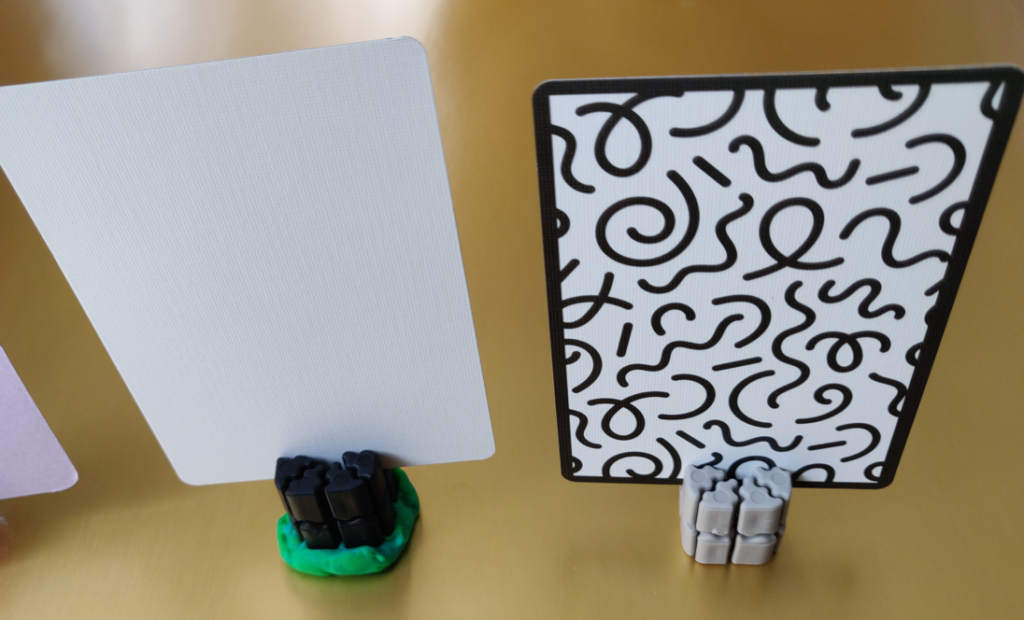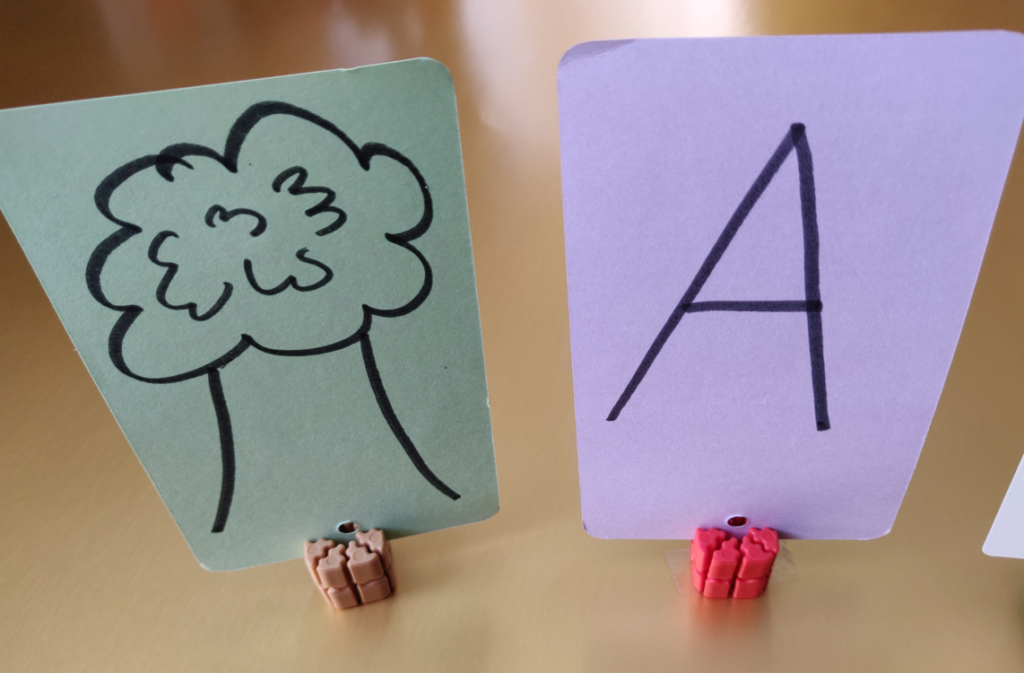Game piece accessibility guide for players with visual impairment and low vision
This article was written as a collaboration between Howie from Infinity Pig LLC, Richard Bennett from KOTB (Knights of the Braille), disability and accessibility consultant, and Steph from TTRPGkids.
Jump to:
- Focus for this guide
- Anchoring and securing game pieces
- Additional accessibility features of TI’TAINS
- Recommendations for adhesive
- Recommendations for gameplay surfaces
- Additional resources
Focus for this TTRPG accessibility guide
One of the concerns that comes up in any game is that pieces on a map or board can be knocked over easily when a player bumps the table or reaches across multiple pieces. In playing with my kid, I know he bumps pieces quite often since he’s still developing fine motor skills. It’s also a particular concern for players with visual impairment or low vision who may have difficulty seeing pieces or perceiving distance or depth on the game board. This guide is aimed to help improve accessibility for player with visual impairment and low vision, specifically using the TI’TAINS card holders as an example but with applicability to other game pieces, so that everyone can use physical games boards together.

Anchoring and securing TI’TAINS card holders (and other game pieces) to a TTRPG map
- Select your game piece (like your TI’TAIN card holder)
- Apply a removable non-permanent adhesive (recommendations below) to the bottom of the piece
- Position your game piece on the gameplay surface with the adhesive side down
- Press the piece down gently onto the gameplay surface
- Insert cards, minis, and more into the TI’TAINS base

Additional accessibility options with TI’TAINS
TI’TAINS card holders are designed to be able to insert any card you want into them. This means you can use them to make 3D dungeon walls, hold custom minis, mount terrain pieces, ect, and they’re customizable.
Blank white playing cards are especially useful for this and can be a base for applying solid bold colors, different patterns, textures, or even using a braille puncher to provide players with visual impairment or low vision a way to interact with the terrain without needing everyone to buy expensive 3D terrain pieces. The cost of one deck of cards gives you 54 customizable potential pieces to mess with and add to your TI’TAINS.

Because the bases can fit multiple sizes of cards, you can also increase the size of the elements on the board to fit your player’s needs. You can add a large symbol or image and vary the colors of the cards used so it’s easier for a player with visual impairment or low vision to distinguish one piece of terrain from another or be able to tell characters apart by printing a larger image of your mini to paste to a card.

The bases are also solid colored in a few different distinct colors, so you can color code pieces even if the minis or cards that you choose for the top are difficult to distinguish. If all the baddies have a red base, or you know your mini has a black base, that can help with picking them out on the board.

Recommendations for non permanent adhesive to add to your TTRPG pieces
For adhesives in step 2, you want something that’s not going to permanently stick to the board, especially for minis that will need to move around frequently. Double-sided tape is great and small Velcro patches from the dollar store can be great as well if you have a large hook/loop surface to play on. I would also recommend to try scrapbooking adhesive dots or even sticky note glue. You can also try Play-Doh, which has the added benefit of weighting the pieces down in addition to providing some adhesion (just be careful not to press too hard or it can get stuck in your game piece).

Recommendations for TTRPG gameplay surfaces that work with non-permanent adhesives
For gameplay surfaces, you also want something that either you don’t mind having residue left behind on or you want something that can easily release the adhesive, and it doesn’t need to be complicated. Print and play single use maps work great since, if the paper is torn or sticky marks are left behind, you only intended it for one use. For reusable surfaces, a clear plastic sheet that goes over your game map can help preserve a paper map, you can use shiny poster board as a play surface, or there’s pre-printed plastic/coated maps that come in very handy as well.

Additional resources for improving TTRPG accessibility for players with visual impairment and low vision
I don’t want to just relist everything that Knights of the Braille has put together, so my recommendation is to check out their website linked here, which has an extensive list of resources for improving accessibility for player with visual impairment and low vision for a variety of different TTRPGs. Richard Bennett from Knights of the Braille also helped with this article.

I would also recommend to check out the DOTS RPG project, which adds braille numbering to TTRPG dice and also has a variety of resources to reference as well.
Thank you, and happy gaming!
We hope that this gives you some simple ideas for making your TTRPG gameplay sessions more accessible and enjoyable for everyone at your table, particularly, for players with visual impairment or low vision.
If you liked this post, make sure to subscribe to the TTRPGkids monthly newsletter to stay up to date on the latest reviews, tips and tricks, game and podcast list updates, and more! Thank you for playing tabletop RPGs together and sharing this awesome hobby!



2 thoughts on “Game piece accessibility guide for players with visual impairment and low vision”